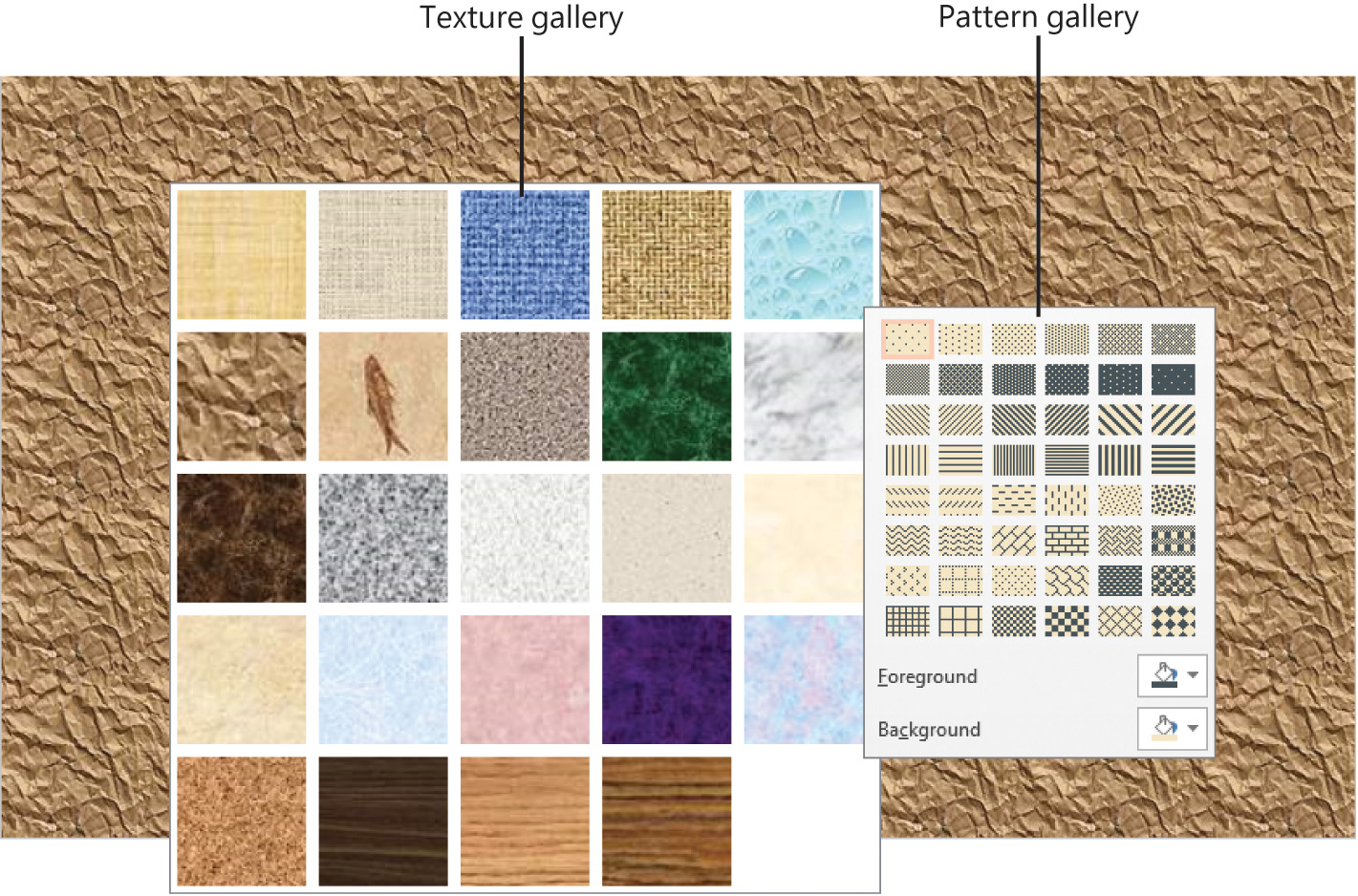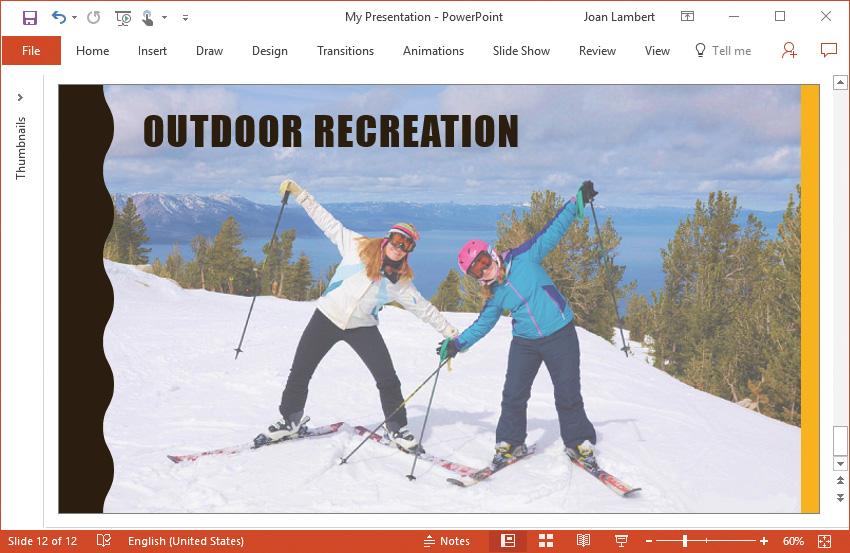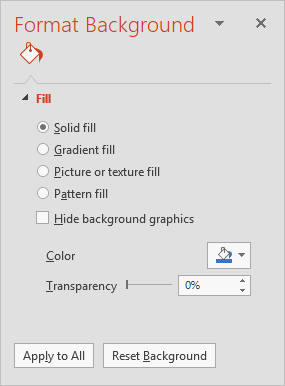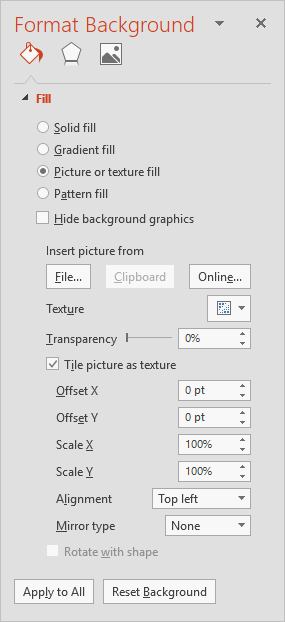Objective 1.2 Insert and format slides
- 1.2.1 To add slides
- 1.2.2 Apply a layout / Reset
- 1.2.3 Hide / Delete Slides
- 1.2.4 Format slide backgrounds
- 1.2.5 Configure headers and footers on slides and printed materials
1.2 Contents
1.2.4 Format slide backgrounds
You can customize the background of an individual slide by adding a solid color, a color gradient, a texture, or even a picture.
In the Format Background pane, you can specify the colors, texture, pattern, or picture that appear on the background of the current slide or slide master.
You can configure a simple yet elegant slide background by displaying a solid color or color gradient that reflects the color scheme applied to the presentation.
You can configure a more complex slide background by selecting one of the 15 built-in textures or 48 patterns that can be customized with any two colors. Each texture is a small graphic that is tiled on the slide and designed to repeat gracefully, both horizontally and vertically.

The Paper Bag texture applied to a slide, and other texture and pattern options
If none of the textures meets your requirements, you can tile a picture of your own. You can customize a slide background even further by using a picture as the background. Because most pictures are too busy to support the inclusion of other content on the slide, these are often best used for title slides or other slides that don’t have to support a lot of content.

Picture backgrounds can convey additional information on slides with little text
Tip: If you want to add a watermark, such as the word Draft or Confidential, to the background of your slides, add the text to the background of the slide master.
To display the Format Background pane
- On the Design tab, in the Customize group, click the Format Background button.
- Right-click the slide, and then click Format Background.
To modify individual slide backgrounds
- In Normal view or Slide Sorter view, select the slide or slides you want to modify.
- Display the Format Background pane.

- In the Format Background pane, do one of the following:
Click Solid fill, and then select the color and set the transparency.
Click Gradient fill, and then select the type, direction, angle, and gradient stop locations and colors. For each color, set the position, transparency, and brightness. Click Picture or texture fill, and then select a local or online picture, or select a texture. Then set the transparency and if appropriate, select the Tile picture as texture check box or set the offset, scale, alignment, or mirror type.
Click Pattern fill, and then select a pattern, foreground color, and background color. 



- If you want to remove the background graphics applied by the slide master, select the Hide background graphics check box.
- If you want to apply the background settings to the slide master, click Apply to All.